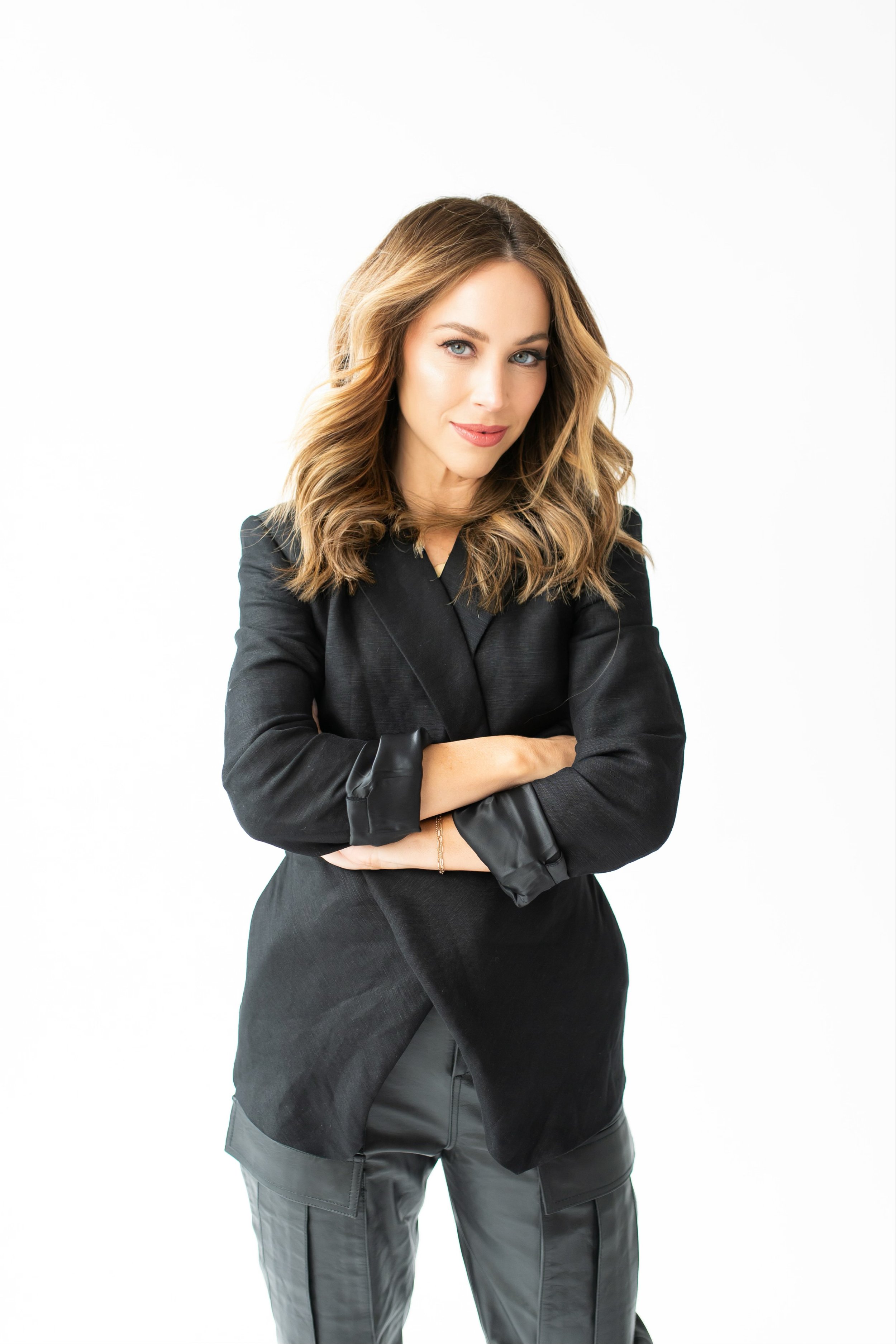The Biggest Mistake People Make When Collaborating—Plus, 4 Things To Do Before Teaming Up With Someone
Everywhere you look, it seems like brands are partnering up to run a giveaway, go live on Instagram, or launch a co-branded product collaboration. It makes sense then, that more and more people would be curious about whether or not their business should join the collaboration party, too.
The short answer is YES, you should definitely collaborate. When we come together to share our resources, ideas, and communities with one another, we are so much more powerful than when we do things on our own.
The long answer is, although collaboration can be an incredible strategy to achieve your business goals (especially during the current climate of social distancing), you can totally miss the mark if you don’t lay the groundwork properly first. Before you take a dip in the collaboration pool, there are a few steps to take so you don’t accidentally do a belly flop:
Here’s how to do it right.
1. Know your company inside and out
This includes knowing your mission (why you do what you do), vibe (how you communicate what you do), audience (who you do it for), offering (what you do), and execution (how you do what you do). Having that information top of mind will make you sound like the ultimate polished business owner, plus it’ll help you identify great potential partners down the line.
It’s also important to have a super-tight elevator pitch that explains who you are, what you do, for whom you do it, and how you do it. For example, mine is, “I’m a collaboration consultant who teaches individuals, entrepreneurs, and organizations to solve problems and achieve their goals by thinking collaboratively and harnessing the power of their network.”
Having a clear and concise elevator pitch not only makes it easier for you to explain what you do, it makes it easier for other people to explain what you do when you’re not around (and THAT is how you get great referrals.)
It’s totally fine if you continue to tweak it regularly, in fact, it’s encouraged. My elevator pitch has changed nearly a million times over the last few years, so don’t get too hung up on making it something that will last forever. The most important thing is to make sure it remains true to what your business is today, not six months ago.
2. Identify your asks and gives
One of the biggest mistakes I see people make when they begin collaborating is not taking time to figure out what they need to get from a partner in order for the collaboration to feel like a success. If you haven’t identified your “asks” (what you'd like to get from a collaboration), you’re much more likely to take whatever the other party offers you, which may or may not be valuable to you or support your goals. The last thing you want to do is not express your needs, and ultimately feel taken advantage of.
Another big mistake is when people aren’t clear about what all they have to offer a partner before entering into a collaboration. Thinking through your “gives” (what you can give in a collaboration) helps you identify all the ways in which you can create an even value exchange between you and your potential partner.
The key to creating a collaboration that won’t make either side feel taken advantage of (a big fear I hear from people who are hesitant to collaborate) is to always aim for an even value exchange. What feels beneficial to one person may not matter at all to another, so it’s important to have an honest conversation at the beginning of the relationship to find out what each side values. That way you can ensure that each partner is getting what they need in order for the collaboration to feel like a success.
3. Look for the overlap
Much like romantic relationships, not every brand is going to be the right collaborative partner for you. One of the best ways to know whether a potential partner is the right fit is to make sure you share a similar mission (why you do what you do), vibe (how you communicate what you do), and audience (who you do it for). When those three things are aligned, it’s much more likely that a collaboration will be well-received by both of your communities.
You can also have an overlapping offering (what you do) or execution (how you do what you do), but not both. If you offer the same thing in the same way, you're basically the same company, and that doesn't make for a good partnership. Looking for the overlap also means finding common ground from the get-go. What is it that your brands (or you and the other person) have in common? When you start from that place, you’re both likely to feel seen and respected from the beginning, which ultimately leads to a better working relationship.
4. Get a warm introduction
It’s always best to start collaborating with individuals and brands you already know personally rather than reaching out to total strangers. I like to encourage my clients to build up their collaboration muscle with some "test and learns" with people they trust while the stakes are low. Once you feel confident about your ability to be a great partner and run a successful collaboration, then you can expand past your immediate circles to the brands you don't yet know.
Once you’re ready to take the leap beyond your first-degree network and begin reaching out to some brands that you don’t know (yet), the next move is to get a warm introduction to them from a mutual connection whenever possible. If you can avoid reaching out cold (meaning they’ve never heard of you and have no connection to you), you’ll increase the likelihood that they’ll respond.
Consider how different it feels when a stranger emails you directly vs. when a friend connects you to someone via email. Our guard naturally goes up when we see a stranger’s email in our inbox, but the same isn’t true for when someone comes to you through a friend you trust.
The easiest way to figure out who may be able to connect you to someone at the brand you want to reach is by using LinkedIn. When you search for the person at the brand who you ultimately want to connect with, you’ll be able to see what connections you have in common. If you can find someone that you know well enough to ask for an intro, reach out (preferably via email instead of LinkedIn Mail) using this template.
Just a little housekeeping note
Once someone introduces you via email, do them a favor and in the next email response, thank them and move them to BCC. I can’t tell you how many emails I’ve been trapped in long past my warm introduction! Also, remember to reach back out to let them know if anything came of their introduction. As someone who connects people all the time, it’s always nice to know if it worked out.
Collaborating with the right partner can be an exciting, rewarding experience for everyone involved, especially when you go about it intentionally and strategically. Always aim for an even value exchange, and remember that it’s in the overlap where communication, connection, and collaboration can happen. Start there, and the rest will follow.
About the Author: Baily Hancock is a collaboration consultant, speaker, and the host of the “Stop, Collaborate & Listen” podcast who’s on a mission to save humanity with collaboration. Join the Entrepreneurs Who Collaborate Facebook Group to find potential partners and receive Baily’s collaboration templates, tools, and tips.
This story has been updated.
How to Network and Cultivate Relationships That Level Up Your Career
Time to find your biz bestie.
Photo: Create & Cultivate
The strength of your relationships is oftentimes the biggest indicator of your success because, the truth is, no one is successful alone. With a little reflection and strategy, you will find you have more resources available to you through your extended network than you ever imagined. The key to leveling up in your career is defining, building, and nurturing your community.
So how do you find your people and have these relationships constantly working for you? Here are some foundational elements to turn acquaintances into colleagues, and colleagues into your most trusted friends. The ultimate goal is to have people around you committed to ensuring you are consistently leveling up, and for you to have the opportunity to do the same for others.
Take Inventory of Your Relationships
The first step is to assess where your relationships currently are. Reflect on the strength of your network as related to your professional goals. What relationships do you need to build? Are there any you need to let go of that are holding you back? Don’t be afraid of asking for introductions to other people in your extended network.
By the way, if you are the smartest and most successful person in the room, you’re in the wrong room! Push yourself out of your comfort zone to get out to more events where you can level up into elevated circles of influence. It’s not sleazy or cheesy; it’s just a fact that greater access will guarantee greater success.
Get Clarity on Your Value Proposition
When you are trying to create, build and nurture relationships, your #1 focus should be on the value you provide to others. Once you have provided enough value to build a foundation of trust, only then should you begin asking for what you need. So, first things first, what do you provide that other people need? Is it something general, like positivity or kindness, or a special skill or knowledge? Can you make a helpful introduction for someone? Provide solutions for a problem they have? Make a personal recommendation on an inspiring book or life-changing vacation?
“Be yourself. Be vulnerable. Know your worth. ”
Make Meaningful Connections
There are a few keys to creating deeper connections. You will want to be genuinely interested in others and encourage people to talk about themselves. Any two people will have areas of similarity, whether it be a mutual favorite TV show or a favorite food; build on those and remain curious. Asking good, open-ended questions is a foundational element. You have something to learn from every person, so smile and give honest and authentic appreciation.
A sincere compliment goes a long way. The goal in this stage of connection is to deepen the conversation, create a bond, and leave with the other person thinking: I like that person. I enjoyed that brief interaction, and I’d be open to giving that person more of my time.
Ultimately, the best advice to create connections is the simplest: Be yourself. Be vulnerable. Know your worth. We are all drawn to authenticity. Your uniqueness is your greatest gift. So be true to yourself.
“If you are the smartest and most successful person in the room, you’re in the wrong room!”
Master Your CTA
This is where so many people get awkward and miss the mark, but there is no need for it to be that way. Without a call to action (CTA), your connection stalls. You will want to end every conversation with a CTA that is specific and measurable. Examples include: I’m going to message you tomorrow and get the name of the restaurant you recommended. Or, I’d love to know more about how you handle certain challenges in your job. Can I call your office next week and pick your brain?
You don’t want to be caught in that cycle of saying, “Let’s connect again soon.” This essentially means it’s not a priority for you. If this is a person who you want to build a relationship with, take the responsibility to be the one who provides the specific time frame and desired result of the next interaction.
Follow Up or Fail
Good follow-up alone will elevate you 90% above the average person. To solidify the connection, follow up when you said you would. Send a quick greeting within 24 hours. This is where the Power of 3 comes in: You need at least three different touchpoints to deepen a relationship. That means, for example, a follow-up email, a text message, and a coffee meeting.
Add them on LinkedIn and follow them on social media. It is now super easy to stay connected and remain engaged with other people’s lives. Use your DM’s to drop into people’s inboxes on a regular basis.
Ask for What You Need
You’ve now laid the foundation for a reciprocal relationship by identifying specific people who you want in your network. You’ve provided them immense value. You’ve followed up and stayed in contact. Now is the fun part—asking for something you need. It shouldn’t be that difficult once you have established trust. People generally love to help others. But they can’t offer assistance if they don’t know what you need.
Be specific, be grateful, and offer a “no pressure ask.” This means it’s okay if they say no. Not everyone will be helpful to you. Continue offering value, building your extended network, and being of service to others, and you will eventually get exactly what you need and more.
BONUS! Engaging Conversation Deepeners
How did you get started?
What do you enjoy the most?
What are the challenges of your work?
What do you love to do when you’re not working?
That’s amazing; tell me more.
About the author: After more than a decade producing events for high-profile and celebrity clients at powerhouse companies such as Creative Artists Agency and UCLA Anderson School of Management, Megan Accardo left her corporate career to help women navigate theirs. Prior to that, she earned her master’s degree in marital and family therapy (MFT) and ran her own counseling practice, implementing various programs and groups for women. Now, she is providing high-achieving women with the tools they need to reach a greater purpose and live a more impactful life. You can find her weekly on the Power Your Purpose podcast, at her dynamic workshops around Los Angeles, and inside her signature, one-on-one coaching program, From Stuck to Unstoppable. You can find her at @meganaccardo or meganaccardo.com.
Love this story? Pin the below graphic to your Pinterest board.
This story was originally published on October 15, 2019, and has since been updated.













